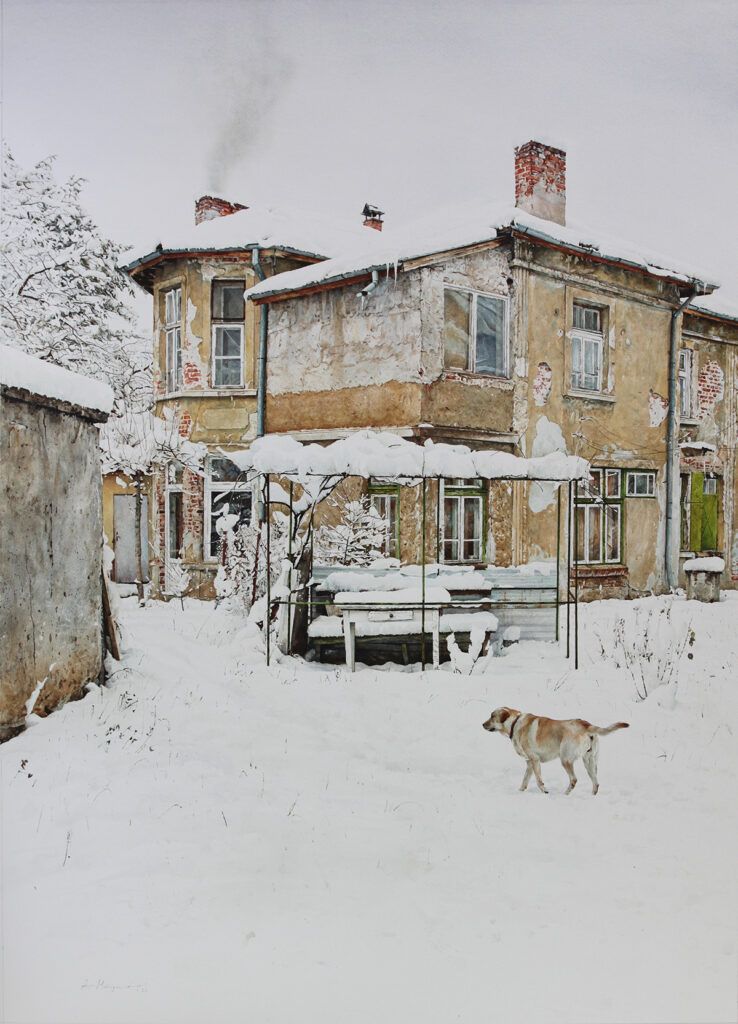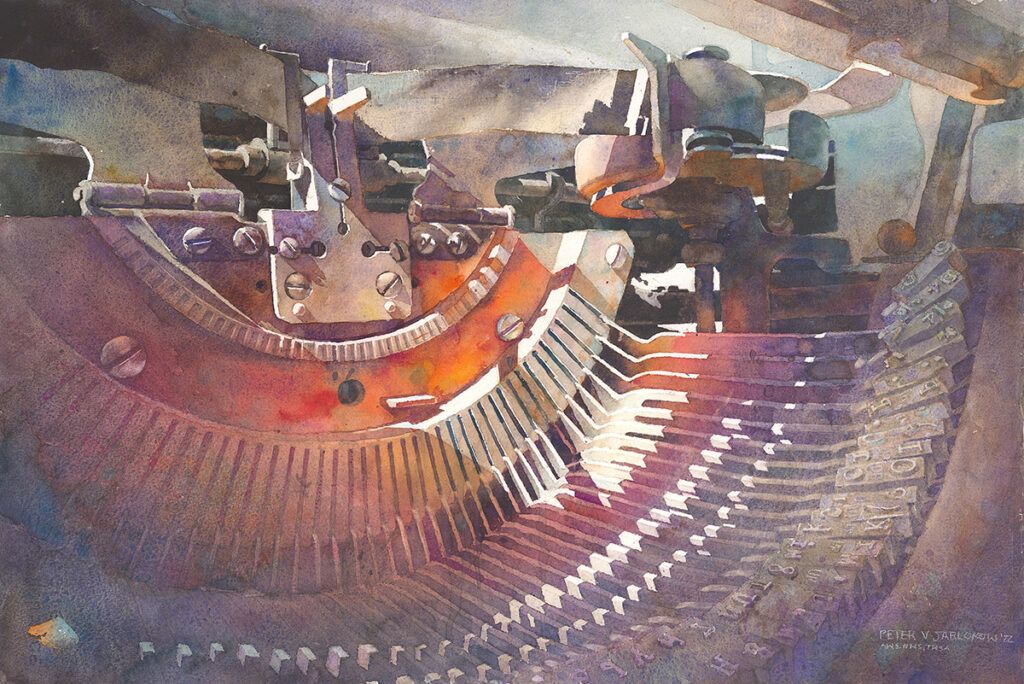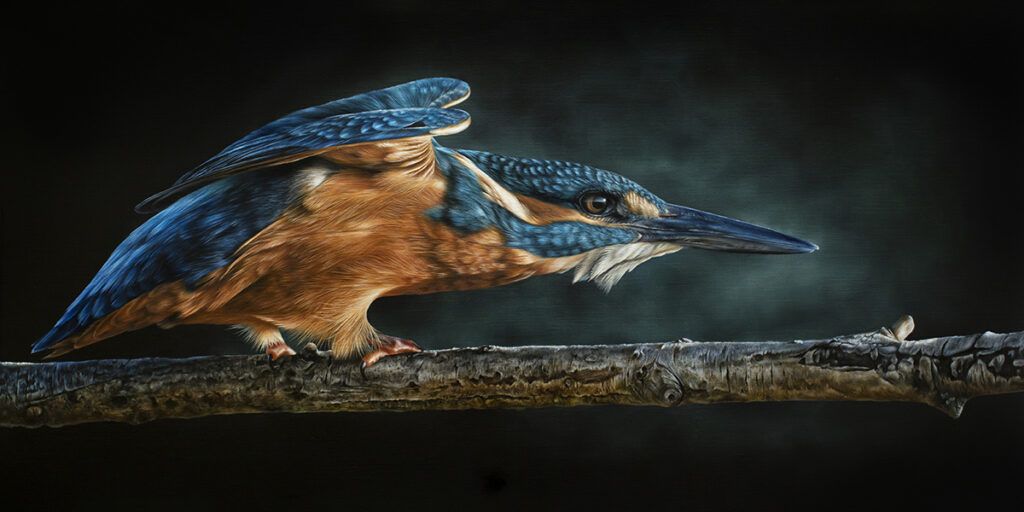The editors of Artists Magazine are delighted to continue the yearly tradition of presenting top artists from around the globe. This year’s jurors selected Gold, Silver and Bronze Award winners, 15 Prizewinners and 25 Honorable Mentions. For the full list of winners in all other categories, please see the links at the end of the post.
Gold Metal Winner: Atanas Matsoureff

(watercolor on paper, 417/10×299/10)
What was your inspiration for the painting Home?
I saw this house while walking in my neighborhood. It looked abandoned but had beautiful architecture and imprints of the past. Then a dog came out. This peaceful, quiet place was a home for the dog and its owners. I decided to paint it just as I’d seen it—there was nothing to add.
What stands out for you about the painting?
I find this work to be full of emotion. The lovely old house is full of stories, and while I was painting it, I sometimes had a strange feeling that it could be my home.
Describe your painting process and materials.
Since I paint en plein air, I had to return to this house many times. It took me about 25 days to complete the work. I started, as usual, with a very detailed drawing. This way, when I begin painting, I already know each and every detail, and understand the perspective. I use artist-grade watercolors, sometimes adding gum arabic, but to me, the most important material is the paper. I find that new papers don’t compare in quality or versatility to the vintage and handmade papers I use. I experiment—using my hands, fingers, wooden sticks and rags. Sometimes I’ll scratch the paint, or I may use a monotype technique. Watercolor has no limitations.
What were some of the challenges in creating this painting?
Home was difficult to paint because it called for different techniques in different areas. The house, in particular, required several techniques— some quite complicated—and its appearance is so different from the purity of the snow. The biggest challenge, however, was working with the size of the piece. The snow would fall, melt and then fall again, changing everything within a day—and painting a snow scene outside was quite uncomfortable.
Currently, what are the big- gest inf luences on your art?
Nature, the simple things around me and scenes with a touch of nostalgia have a great influence on my work. There’s so much unseen beauty around us, and creating my small world of realistic art is actually an escape from the less pleasant aspects of reality. Someone said that my paintings are full of silence. I think that’s true.
“Allowing the negative shapes of the white of the paper to become an integral part of the painting speaks to the skill, sensitivity and confidence of the artist. Everything about this work is designed to tell the story of its title and exemplifies a painting’s ability to be both strong and gentle.” – Thomas W. Schiller, Juror
Atanas Matsoureff, a self-taught watercolorist, is a Signature Member of the American Watercolor Society and the International Masters of Watercolor Alliance, China, for which he serves as the country representative for Bulgaria.
Silver Metal Winner: Peter V. Jablokow

What was your inspiration for the painting Type Bars?
I have an old Underwood typewriter sitting near the window in my office, and one morning, I found the shadow pattern cast on the machine particularly interesting. I chose a close-up composition of the keys and mechanism to make the scale less obvious.
What stands out for you about this painting?
I’m happy with the limited palette of neutral gray with a splash of orange in the center, along with the distribution of light shapes.
Describe your painting process and materials.
I take lots of reference photos to find the best com- position. In fact, I’ve taken pictures of this typewriter in many different lighting situations, in different positions and in different rooms. I usually paint in layered washes and then add the refined details toward the end. One technique I used for this painting that might be a bit unusual was to dot paint in areas with a small brush or make minuscule adjustments within the washes to make them appear more spontaneous than they were. The lower left corner of the work was done this way.
What were some of the challenges in creating this painting?
That bottom left corner was also my biggest challenge. I needed to keep the appearance simple and relaxed. This meant playing down the textures, which I usually try to emphasize. In this area, though, they would have been too busy. At first I tried simply painting loosely, but the result was random and noisy. I did enjoy, however, recovering from that early mistake.
What helps you keep your work fresh?
These days I’m really working on composition—thinking more about designing a painting than copying what I see.
Artist and watercolor-painting instructor Peter V. Jablokow is a Signature Member of the American Watercolor Society, the National Watercolor Society and the Transparent Watercolor Society.
Bronze Metal Winner: Marion Tubiana

What was your inspiration for the painting Le Pêcheur?
All of my paintings are based on photographs that inspire me. I then rework the background and lights in order to put more of myself into the piece. I take many of my own photos, but Le Pêcheur is based on a photo by Denis Michaluszko, with whom I work regularly.
What stands out for you about the painting?
I immediately fell in love with the position and determination of this bird. It’s not unusual to see a kingfisher in this pose— ready to pounce and fly toward its prey. I’m very happy with the movement I captured in this painting.
Describe your painting process and materials.
For my oil paintings, I work on stretcher-mounted linen, to which I apply a few layers of gesso. After sketching the composition on the surface, I start applying paint layers with flat brushes. The first layer is just to cover the background. In subsequent layers, I develop the details. I use glazing for the final layers, adding still more refinements of details and contrasts.
What were some of the challenges in creating this painting?
The flamboyant blues of the kingfisher are unusual colors for animals. I used those colors for the first time in this painting. This is also the first time I depicted a branch in oils. I enjoyed both challenges.
What are the biggest influ- ences in your painting life lately?
I follow many wildlife artists and photographers on social media, although I try not to be too influenced by the work of others. I want to focus on the type of work I most enjoy and to develop my own style.
What helps you keep your work fresh?
Striving to give every animal I paint a unique life and soul keeps my work fresh. I feel as if I get to know each animal as I paint it. There are so many expressions and atmospheres. With all these possibilities, I don’t worry about keeping my work fresh.
“Technical mastery is evident, from the expert handling of the feathers to the complementary color scheme to the horizontal composition and dramatic lighting. The blurred background, suggesting a portrait, contrasts with the anticipated burst of action. The branch supplies context. This painting has it all.” — Kris Parins, Juror
Marion Tubiana is a photographer and painter of animals. She works in both oil and pastel.
Full List
For the metal winners and the top three in each category, please see below:



:strip_icc()/BHG_PTSN19720-33d9cd22f6ab49e6a21982e451321898.jpg)

More Stories
Gurney Journey: USA Today Recommends Dinotopia
“From Generation to Generation…” — A Sanctified Art
The Public Theater’s Under The Radar Festival Lights Up NYC This January